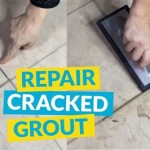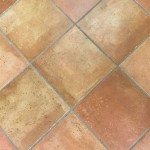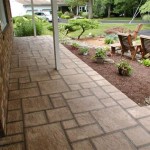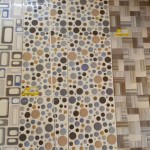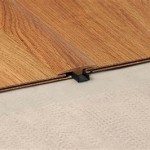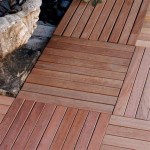How to Fix Broken Floor Tiles in Bathroom Sims 4 CC
Bathroom renovations in The Sims 4, particularly when incorporating custom content (CC), can introduce a range of aesthetic and functional enhancements. However, issues such as broken or visually glitched floor tiles can detract from the overall appeal and immersion. Addressing broken floor tiles, especially when caused or exacerbated by CC, requires a systematic approach involving troubleshooting, repair techniques, and an understanding of how the game handles custom content.
This article outlines the necessary steps to diagnose and repair broken floor tiles in The Sims 4 bathroom settings, focusing on scenarios where Custom Content (CC) is a contributing factor. It covers identification of the issue, verification of CC compatibility, steps for repairing damaged floors, and preventative measures to minimize future occurrences.
Identifying and Diagnosing the Problem
The first step in resolving broken floor tile issues is accurately identifying the problem. This encompasses distinguishing between various types of floor tile anomalies. Visual artifacts may manifest as textures that are corrupted, missing entirely, or displaying incorrect patterns. Tiles might appear displaced, overlapping each other, or exhibiting gaps where they should be seamless. It is crucial to document the precise visual errors present.
Furthermore, it is necessary to determine whether the problem is isolated to a single bathroom, specific areas within a bathroom, or occurs globally across all building lots. This differentiation can provide a clue as to whether the problem stems from a localized build error or a wider game issue. Examine the issue in different lighting conditions and from multiple viewpoints (camera angles), as the visual problems sometimes vary depending on these factors.
When custom content is suspected to be the cause, attempt to identify if the problem arises exclusively in areas where specific CC flooring or bathroom objects are used. If the issue only occurs near a particular shower, sink, or floor tile set, this strongly suggests that the CC asset is contributing to the visual error. The name of the specific CC item then becomes a critical piece of information for later troubleshooting.
Finally, verify that the graphics settings within The Sims 4 are compatible with the installed custom content. Low graphics settings may not adequately render complex textures or custom meshes, leading to visual glitches. Temporarily increasing the graphics settings to the maximum can help to determine if the problem is resolution or rendering-related, or inherent to the CC itself.
Troubleshooting Custom Content (CC) Compatibility
Once the problem has been identified and CC is suspected, systematically testing the compatibility of custom content becomes vital. This process aims to isolate the problematic CC asset through a process of elimination.
Begin by removing all custom content related to flooring and bathroom décor from the game's "Mods" folder. The location of this folder is typically within the "Electronic Arts" folder in the user's Documents directory. Removing all CC ensures a clean slate. Reload The Sims 4 and check if the broken floor tile issue persists. If the problem disappears, this confirms that a CC file is the likely culprit.
If the problem disappears with all CC removed, it’s time to systematically reintroduce the CC. This can be done in batches to speed up the process. Create smaller subfolders within the Mods folder and place groups of CC files into each. Reload the game and check for the broken tiles. Repeat this process until the conflicting CC is isolated to a specific subfolder.
Once a suspect subfolder has been identified, further divide the CC files within that folder into even smaller groups. Reintroduce them into the game, testing after each addition, until the specific problematic CC file is found. There are several methods for determining the problem file more quickly. One is the "binary search" method, where the files are split in half each time until the single problem file is identified. Another involves examining the CC files and prioritizing testing ones downloaded around the time the problem began or those known to be potentially problematic (e.g., older files converted from earlier Sims versions).
It is essential to ensure that custom content is up-to-date and compatible with the current version of The Sims 4. Outdated CC can cause numerous issues, including visual glitches. Check the creator's website or relevant Sims 4 modification communities for updated versions of the CC. Pay close attention to comments sections, as other users may have reported similar issues with the CC and potential solutions.
Furthermore, investigate reported conflicts between different pieces of CC. Some custom content may be incompatible with other mods or CC, leading to visual anomalies. Resources like the Sims 4 Studio tool or online CC conflict checkers can assist in identifying potential conflicts. These tools analyze the files and flag instances of overlapping resources or conflicting code.
If issues related to broken floor tiles persist, even after confirming compatibility and checking for conflicts, consider utilizing Sims 4 Studio to inspect the CC file itself. Sims 4 Studio allows the user to view the mesh, textures, and associated code of a custom content item. Compare the properties of the problematic CC with similar, functional CC. Discrepancies in texture size, LOD (Level of Detail) settings, or mesh complexity can sometimes explain visual glitches.
Repairing Damaged Floors and Preventing Future Issues
After identifying and addressing the problematic CC, the next step involves repairing the damaged floor tiles within the game. This may involve actions within the build mode of The Sims 4, as well as potential modifications to the save file itself.
Within the build mode, the simplest approach is to replace the affected floor tiles. Using the "tile" tool, select the appropriate flooring material and overwrite the damaged tiles. Sometimes, the game's rendering engine can get confused, particularly with complex patterns or custom textures. Reapplication of the same flooring can often force the game to correctly render the tiles. In some cases, completely removing the floor and rebuilding it from scratch may be required, particularly if the damage is extensive or widespread.
If the problem persists after replacing the floor tiles within build mode, consider deleting the game’s cache files. These files can sometimes store outdated information or corrupt textures, leading to visual anomalies. Navigate to the "The Sims 4" folder within your Documents directory and delete the "localthumbcache.package" file and the contents of the "cache" folder. Deleting these files will force the game to regenerate them upon the next startup, potentially resolving the visual glitch.
To mitigate future occurrences of broken floor tiles, adopt preventative measures when installing and managing custom content. Prioritize downloading CC from reputable sources that have a proven track record of creating high-quality, well-tested mods. Read user reviews and comments before downloading, as these can provide valuable insights into potential issues or compatibility problems.
Maintain a well-organized "Mods" folder. Employ a logical folder structure to categorize different types of CC (e.g., "Flooring," "Bathroom Décor," "Furniture"). This makes it easier to locate and troubleshoot specific CC files if problems arise. Consider using a mod manager, such as Sims 4 Mod Manager, which can assist in organizing, enabling/disabling, and identifying conflicts between CC files.
Before installing new CC, back up the "Mods" folder. This allows for easy restoration to a previous state if a new CC file introduces unforeseen problems. Also, test new CC in a separate, test save file before incorporating it into the primary game save. This allows for the detection of potential issues without risking the integrity of the main save.
Regularly clear the game’s cache files. This helps to prevent the accumulation of outdated or corrupt data that can contribute to visual glitches and other issues. Make it a routine to clear the cache files after installing new CC or after experiencing any visual anomalies.
Keep The Sims 4 game client and all expansion packs/game packs/stuff packs up-to-date. Game updates often include bug fixes and performance improvements that can address issues related to custom content rendering. Ensure that any custom content being used is compatible with the latest version of the game.
Finally, consider the complexity and resource intensity of the CC being used. Highly detailed and complex CC, while visually appealing, can sometimes strain the game's rendering capabilities, particularly on lower-end systems. Use CC judiciously and prioritize quality over quantity. Opt for CC that is optimized for performance and has a minimal impact on the game's stability.

Water Drops Tile Floor

Mod The Sims Broken Bathroom

Mod The Sims Broken Bathroom

Mod The Sims Broken Bathroom

The Sims Resource Dirty Old Tiles

The Sims Resource Dirty Tile

Mod The Sims Broken Bathroom

The Sims Resource Dirty Tile

The Sims Resource Chipped Tiles Wall Used Dirty

Mod The Sims Broken Bathroom
Related Posts


